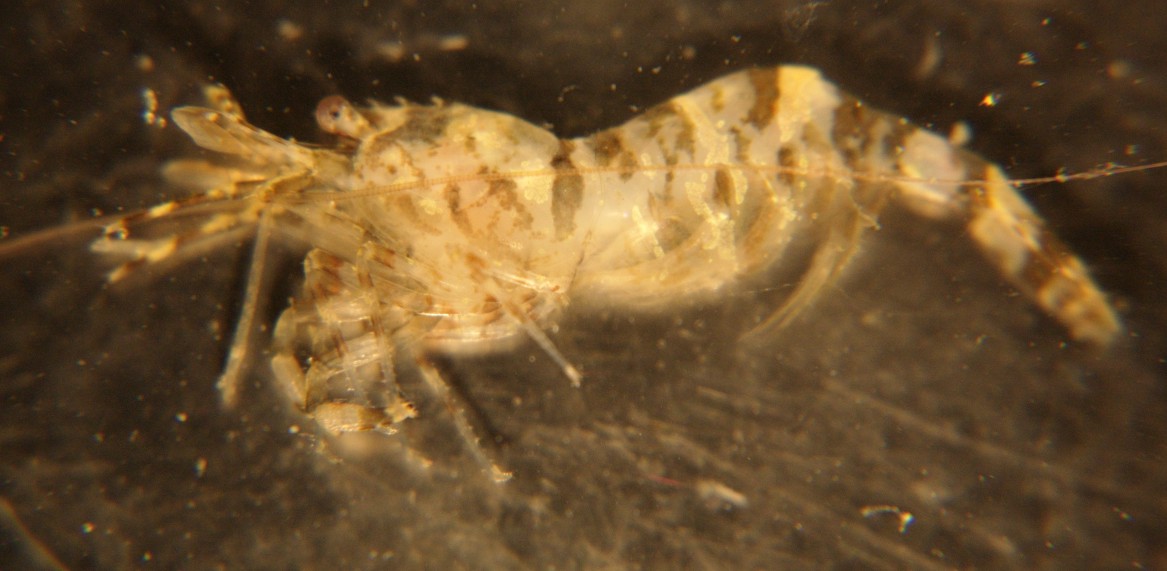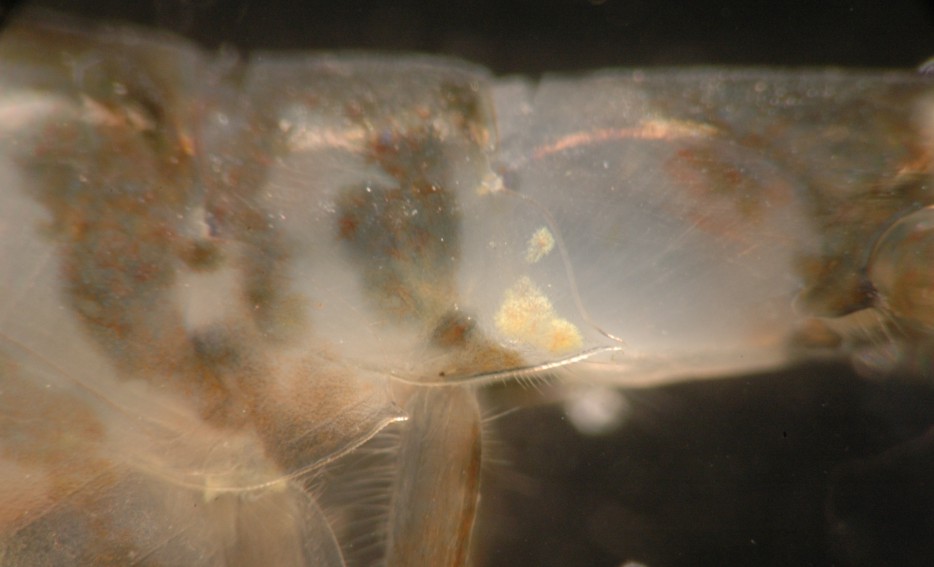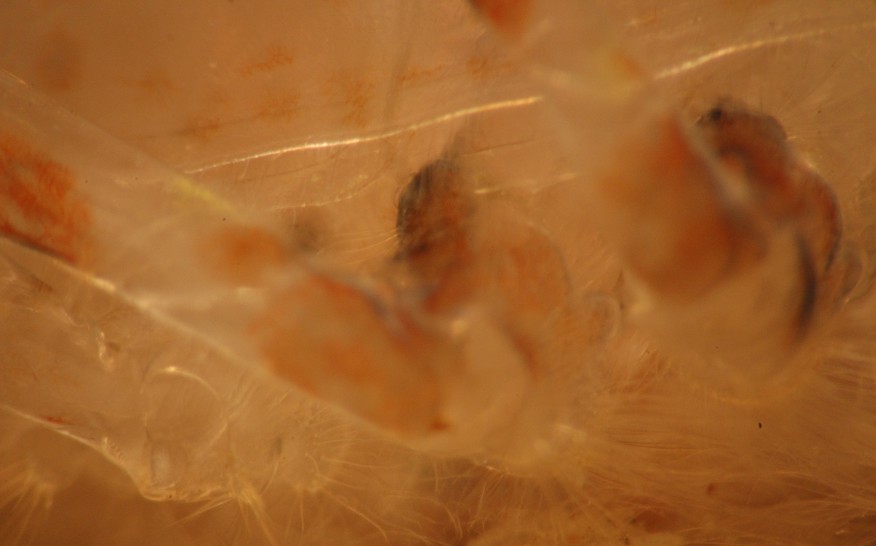Heptacarpus brevirostris (Dana, 1852)Common name(s): Stout coastal shrimp, stout shrimp, short-spined shrimp |
|
| Synonyms: Spirontocaris brevirostris | 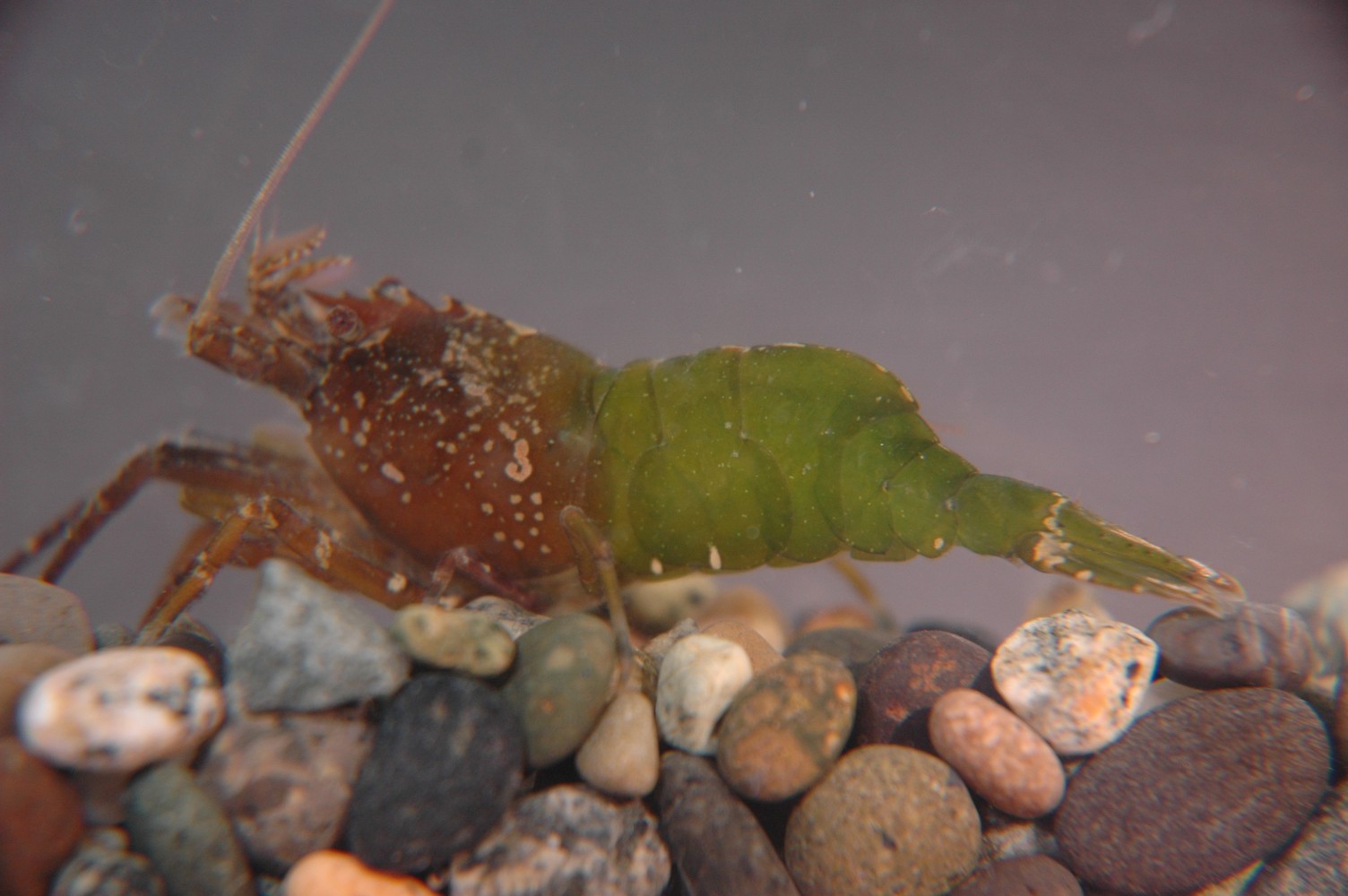 |
| Phylum Arthropoda
Subphylum Crustacea Class Malacostraca Subclass Eumalacostraca Superorder Eucarida Order Decapoda Suborder Pleocyemata Infraorder Caridea Family Hippolytidae (broken-back shrimp) (Now in family Thoridae) |
|
| Heptacarpus brevirostris from Padilla Bay. Total length approximately 5 cm. Identified by Andrew Geigle. | |
| (Photo by: Dave Cowles, July 2006) | |
How to Distinguish from Similar Species: Heptacarpus pugettensis has no epipodite on leg 3 and has only 1 dorsal spine on the distal portion of article 1 of the first antenna. H. taylori has a strongly downcurved rostrum which does not reach the cornea of the eye. Genus Eualus is distinguished from genus Heptacarpus most easily by the fact that Eualus has an exopodite on the 3rd maxilliped and Heptacarpus does not. Many if not all Heptacarpus were formerly identified as Spirontocaris.
Geographical Range: Aleutian Islands, Alaska to Santa Cruz, CA
Depth Range: Intertidal to 128 m
Habitat: Common in harbors on floats and pilings, and along the open coast in low intertidal and subtidally. This is the most commonly encountered shrimp in the rocky intertidal of the NE Pacific coast and SE Alaska.
Biology/Natural History:
Predators
include the rosylip sculpin Ascelichthys rhodorus.
Parasites
include the isopod Bopyrus
hippolytes, which lives on the side of the carapace,
and the rhizocephalan barnacle Sylon
hippolytes whose externa may be seen extending
from the abdomen
of infested individuals. In S. British Columbia, females may
be seen
with eggs from January to August. The shrimp are common in
tidepools
but hide by day and come out at night.
| Return to: | |||
| Main Page | Alphabetic Index | Systematic Index | Glossary |
References:
Dichotomous Keys:Flora and Fairbanks, 1966 (as Spirontocaris brevirostris)
Kozloff 1987, 1996
Smith and Carlton, 1975
Wicksten, 2009
General References:
Harbo,
1999
Jensen,
1995
Johnson
and Snook, 1955 (as Spirontocaris brevirostris)
Morris
et al., 1980
O'Clair
and O'Clair, 1998
Ricketts
et al., 1985
Sept,
1999
Scientific Articles:
Web sites:
General Notes and Observations: Locations, abundances, unusual behaviors:
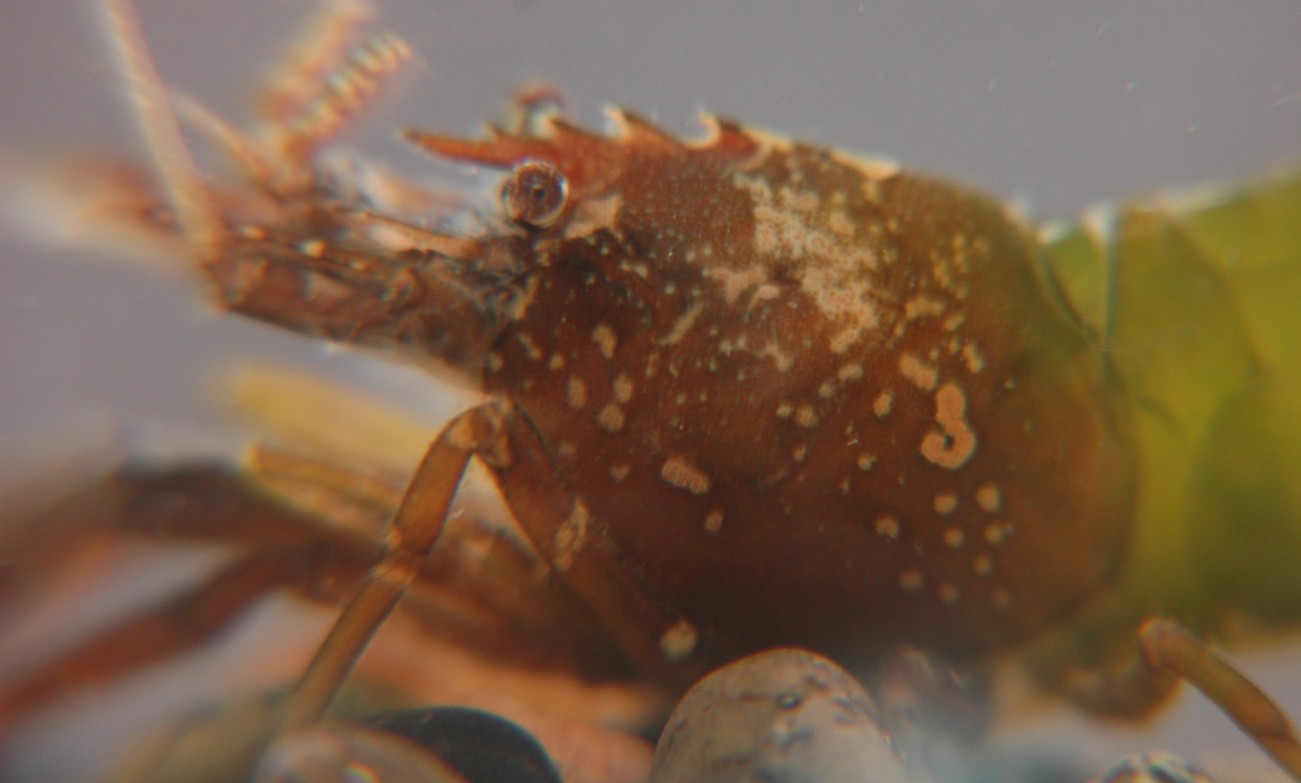
This closeup of the carapace
shows the short rostrum which extends past the cornea but not past the
first article of the first antenna, with 3-6 stout dorsal spines (some
on the carapace), a single tip, and no ventral spines, and no
supraorbital
spine.
This individual shows another color phase. This shrimp has a very strange history and shows that this species is capable of a stygian lifestyle. The shrimp was found living at the bottom of the Rosario Beach Marine Lab seawater reservoir when it was opened for inspection in June 2012. The seawater pumps had been shut off since August 2011. This shrimp and a number of others in the tank must have been sucked through the intake filter screens as larvae in August 2011 at the latest. They would have had to have grown to full size in the underground seawater reservoir through the 10 winter months of 2011-2012, in total darkness and in uncirculated seawater. Presumably they ate debris off the bottom of the tank. The light for this photo is likely some of the first light this shrimp has ever seen. Carapace length for this individual is about 9 mm and total length is 3.5 cm. Photo by Dave Cowles, June 2012
The posteroventral corner of the pleurons on abdominal segments 4 and 5 have a sharp point on this species. Photo by Dave Cowles, June 2012
This species has an epipod on pereopods 1-3. This photo shows the coxae at the base of the right pereopods 2 (on the left) to 4 (on the right) The edge of the carapace can be seen above the legs. The flaplike epipod can be seen projecting to the right from the dark part of the coxa of pereopod 2 just above the center of the photo. Photo by Dave Cowles, June 2012.
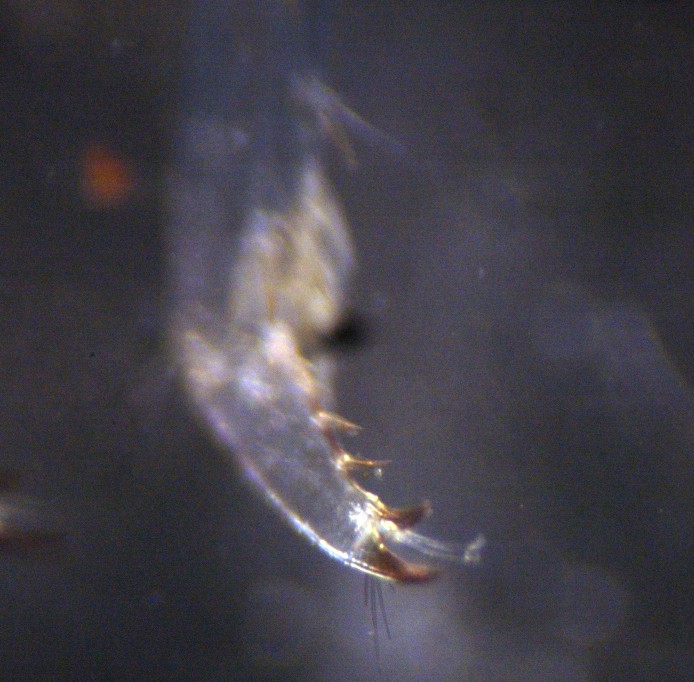
Dactyls of pereopods
3-5 are bifid
(forked at the end). Photo by Dave Cowles, June 2012.
Authors and Editors of Page:
Dave Cowles (2006): Created original page
